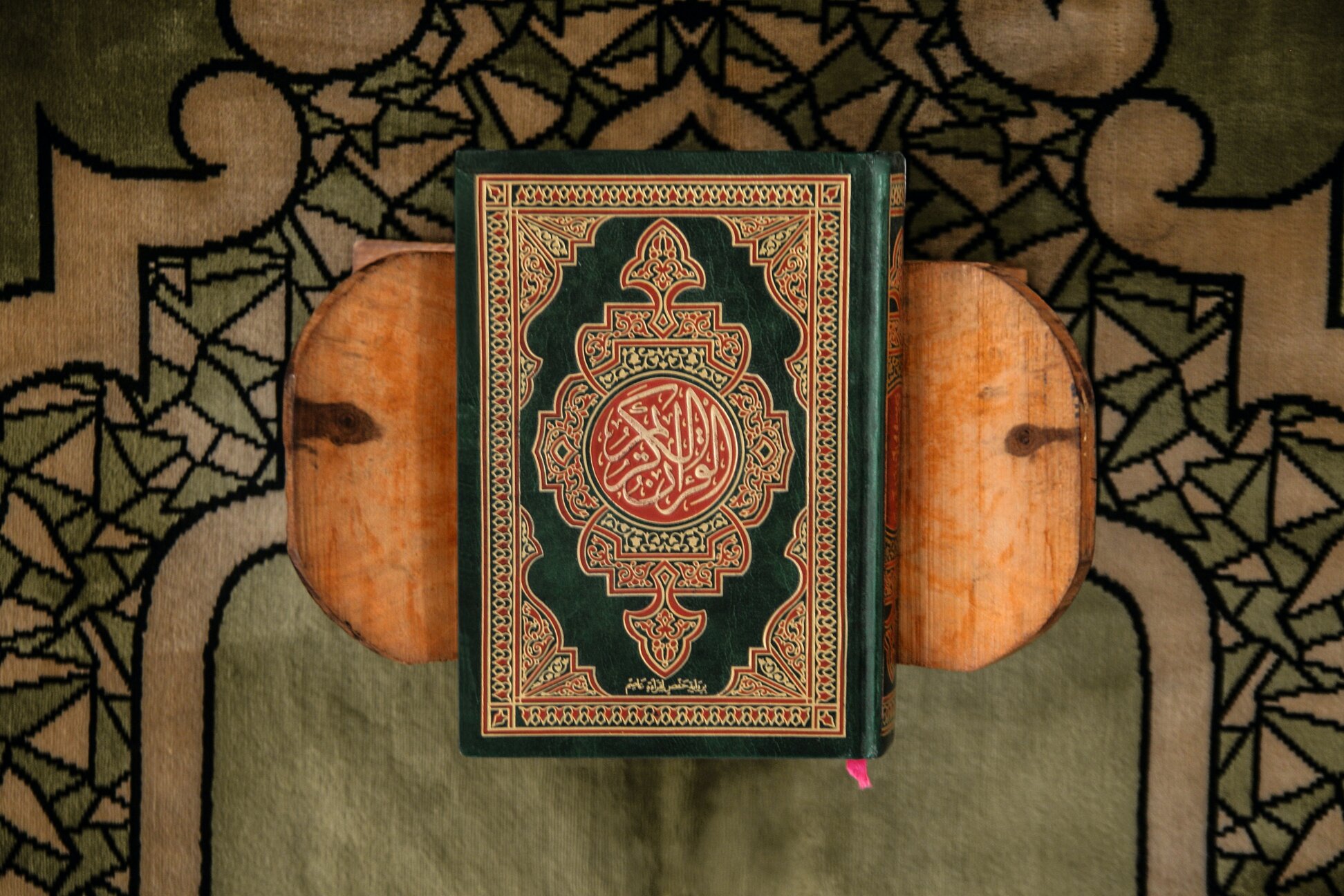Former Shia Waqf Board chairperson Waseem Rizvi’s outrageous claims against the Quran has enraged Muslims leading to protests across the country demanding his arrest.
Rizvi filed a Public Interest Litigation (PIL) in the Supreme Court seeking to delete some of the verses from the Holy Quran, claiming that the verses “incite violence”, and that they were “added in the period of the first three Khalifahs”.
This article will analyse the origins of the Quran, its transmission, and its compilation, to understand why Muslims accept the copies of the Quran they have in their homes to be the exact same words that were revealed to the Prophet Muhammad (peace be upon him).
For the believing Muslims, the Quran is a book of guidance. It illustrates beautiful stories and exemplary parables; scientific miracles; laws; etc. The copious amount of information in the Quran is still being studied and understood.
The Quran was sent as a miracle to the last Prophet of Allah, Prophet Muhammad (peace be upon him). Prophets like Musa (AS) and Isa (AS) were also sent Holy Scriptures, but except for their central message of monotheism, they were revealed in relevance to their particular time and place. Unlike its predecessors, the Quran’s message is for all of mankind, irrespective of place and time.
The Arabs, contemporaries of the Prophet Muhammad (peace be upon him) were well known for their eloquence and prose; the Quran’s verses were so beautifully structured that the whole legion of Arab poets and orators could not produce a single verse like it. The Quran itself challenges the disbelievers:
“Say, O Prophet, ‘If all humans and jinn were to come together to produce the equivalent of this Quran, they could not produce its equal, no matter how they supported each other’” (Quran, 17:88).
What makes the Quran unique from the previous scriptures is the fact that Allah Himself has vowed to preserve it from being changed, “It is certainly We Who have revealed the Reminder, and it is certainly We Who will preserve it” (Quran, 15:9). It is the miracle that has been preserved for all generations to come until the Day of Judgment.
The Quran was revealed across a period of 23 years; its verses came down in accordance to the relevance of the time; situations of despair, hope, comfort; tales of the past messengers and their people; parables with lessons to learn from; verses of reflection; scientific miracles; answers to the disbelievers; commandments to the Prophet (peace be upon him) and the believers etc in its six thousand plus verses. If a human authored a book of this size and nature, it would be bound to contain errors and contradictions. The chronology and arrangement too were done according to the instruction of the Prophet (peace be upon him). It is literally an intricate puzzle solved together to create a flawless masterpiece.
“Do they not then reflect on the Quran? Had it been from anyone other than Allah, they would have certainly found in it many inconsistencies.” (Quran, 4:82).
The gradual method of revelation helped in building the determination of the companions, inspired in them courage and patience, and gave them the strength they needed to endure the persecution by the disbelievers. It also made it easy for them to understand, memorize, and practice the verses of the Quran. The first 10 years in Makkah, the message of Tawheed was of the essence. The next 13 were about the establishment of an Islamic state in Madinah, and the verses revealed there were more to do with law and administration.
The Quran was compiled in 3 distinct states:
1. The preservation of the Quran during the lifetime of the Prophet (peace be upon him).
2. The compilation of the Quran by Abu Bakr (RA).
3. The compilation of the Quran by Uthman (RA).
The fact that the Prophet (peace be upon him) could neither read nor write was one of the greatest proofs that the Quran was not authored by him but by the Creator Himself. The Arabs of the Prophet’s time had a strong oral tradition of poetry and they used to compete with other tribes to produce eloquent poems. It is said that during the advent of Islam, only 17 people knew how to read and write in Makkah. Thus, it is only logical that the Arabs passed on most of their history and poetry orally, and as a result of this became famous for their strong memories. This was the situation of the Prophet’s companions, with the modest number of surahs that had been revealed in the early Makkan period, and the command of the 5 times prayer (salah), the companions would have memorized the surahs then to recite them in their prayers.
Perhaps the earliest record of the written form was during the 6th year of Prophethood when Umar (RA) accepted Islam. The story of his conversion is famous and it mentions his sister had a parchment that had the first few verses of Surah Taha written that one of the companions had brought with him to teach her family. After reading it, Umar exclaimed at the beauty and eloquence of the text and realized the truth and accepted Islam. This story is proof that the Quran was being recorded and taught to others even at the early stages of the Prophet’s message.
The prophet was concerned with the preservation of the Quran and would often repeat the verses after Angel Jibrail revealed it to him as he was fearful of forgetting them. Then Allah revealed to him this verse to reassure him, “Do not rush your tongue trying to memorize a revelation of the Quran. It is certainly upon Us to make you memorize and recite it” (Quran, 75:16-17).
During the later years, the Prophet (peace be upon him) also made sure that the Quran was written down and not just memorized. These would be written down on various materials like cloth, stones, date-palm leaves, saddles, and shoulder blades of animals. Not to mention, Zayd bin Thabit was like the official scribe for the Prophet (peace be upon him).
It was the practice of the Prophet (peace be upon him) to recite the Quran to Angel Jibrail every year during Ramadan, and the angel would recite it back to him. Fatima (RA), the daughter of the Prophet (peace be upon him), narrates that the Prophet (peace be upon him) confided in her, “Jibrail used to recite the whole Quran to me every Ramadan, but this year he has recited it to me twice. I do not see (any explanation for this) except that my time (of death) is near.” Aisha (RA) also adds to this that the year that he died, he recited the Quran twice to Jibrail and heard it from Jibrail twice. During his last recitation, Zayd bin Thabit was present.
There was no pressing need during the lifetime of the Prophet (peace be upon him) to compile the Quran into one single book so attempts to do this were not pursued. Given the fact that numerous companions had memorized all of it and also that the Quran was still being revealed; it would not have been feasible to compile it at the time.
The need for its compilation arose after the Prophet’s (peace be upon him) death, with the selection of Abu Bakr (RA) as their first Caliph. The first issue that Abu Bakr (RA) was that of apostasy; in one such battle, the Battle of Yamamah (12 AH), around 70 companions who had memorized the Quran were martyred. The death of such a large number of qurra (memorizers of the Quran) shook Umar (RA) and he persuaded Abu Bakr (RA) to begin the compilation of the Quran in its written form.
Abu Bakr (RA) was hesitant to do something that the Prophet (peace be upon him) had not, but he released the merits of the idea after Umar (RA) convinced him. They charged Zayd bin Thabit to collect the entire Quran and put it into one manuscript. The wisdom behind choosing him was the fact that he was the primary scribe of the Prophet (peace be upon him), he had memorized the entire Quran during the Prophet’s lifetime, he was younger than the other companions thus his memory was sharper, he was present at the last recitation to Jibrail in Ramadan, and he was one of the most knowledgeable companions with regards to the recitation of the Quran.
He followed a strict code to ensure authenticity and for the first time, the Quran was in one book. Two years after the death of the Prophet (peace be upon him) when all the major companions were still alive, the Quran had been compiled. The written copy was called a mus’haf and remained with Abu Bakr (RA) until his death, which then passed on to Umar (RA) and finally to Hafsah (RA) who was the daughter of Umar (RA) and a wife of the Prophet (peace be upon him).
Under Umar’s (RA) Khilafah, the Islamic state flourished. It expanded to five times its original size. Muslims had control over remnants of the Persian Empire, Egypt, Syria, and parts of the Byzantine Empire. After Umar’s death, Uthman (RA) was selected to continue the khilafah and he too succeeded in many conquests and Islam kept spreading further.
The issues that arose then was the differences in the recitation of the Quran. The Muslims from the newly acquired territories would argue over the correct recitation and reports of these quarrels made it to Uthman (RA). The Third Caliph then decided to have official copies of the Quran be written and sent to all provinces and all other copies to be destroyed so that the Ummah would have one standard Quran.
The companions agreed to this idea and Hafsah was requested to loan him the mus’haf which was then a committee of four people – Zayd bin Thabit, Abdullah ibn az-Zubayr, Sa’eed bin al-Aas and Abd al-Rahman bin Harith to rewrite it. They undertook this task meticulously and consulted the Companions when the need arose. After they finished, Uthman (RA) ordered that one copy of this mus’haf be sent to every province and ordered the governors to burn all the other copies of the Quran there. This was drastic, but it was necessary to keep the unity of the Ummah. He sent reciters to teach people the correct recitation as well.
Every written copy after that conforms to the standard of the Uthmani mus’haf. Uthman’s (RA) compilation occurred in 24 AH or the early part of 25 AH. The reason for his compilation was different from that of Abu Bakr’s. Uthman (RA) merely rewrote the existing manuscript to facilitate proper recitation. Abu Bakr’s manuscript, according to one opinion, had only the verses of each surah arranged. Uthman’s manuscript arranged the Surahs and verses in their proper arrangement.
Yahya bin Ya’mar and Nasr bin Aasim were the first to officially add dots (nuqat) during the reign of Ummayad Caliph Abd al-Malik ibn Marwan to differentiate the similar Arabic alphabets by the means of dots. Abu al-Aswad was the first to add the tashkeel into the Mushaf.
The tashkeel and nuqat were written in red and black respectively to distinguish it from the actual text of the Quran. There are hundreds of manuscripts dating from the first two centuries that present this type of tashkeel system and this eventually came to be accepted as part of the writing of the mus’haf.
In the present age, almost all mus’hafs follow one of two scripts: either Naskhee (most Arab countries) or Farsi (Indian-sub continent).
Glossary
AS: Upon him be peace. Used by Muslims when the name of any other prophet or angel is mentioned.
RA: Radi Allahu anhu/anha/anhuma/anhum. May Allah be pleased with him/her/them. This term is most commonly used whenever the name of a companion of the Prophet Muhammad is mentioned.
References
https://www.kalamullah.com/Books/Introduction-to-Sciences-of-the-Quran.pdf
https://www.kalamullah.com/Books/Who%20Wrote.pdf











































